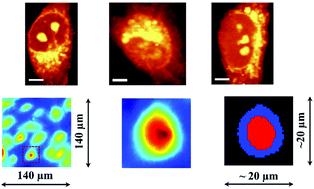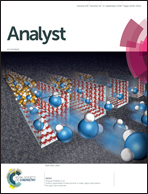Diversity among endothelial cell lines revealed by Raman and Fourier-transform infrared spectroscopic imaging†
Abstract
Growing interest in the role of endothelium under physiological and pathological conditions has led to an increasing demand for its representative in vitro models especially suitable for drug tests and medical diagnostics. There are several endothelial cell lines commercially available whose biochemistry, and hence response to various stimuli, can be different. Recently, two vibrational techniques, Raman and Fourier-transform infrared microscopy, have been found to be potent tools for studying the biochemical composition of a single cell in an easy, rapid and label-free way. However, depending on the applied technique, the results may exhibit some divergence due to different selection rules as well as distinct experimental conditions. This paper presents the methodology of examination and characterization of three popular human endothelial cell lines: HAoEC (primary cells), HMEC-1 and EA.hy926 (immortalized cells). Based on high lateral resolution Raman imaging together with standard and high magnification Fourier-transform infrared measurements, the differences in spectral information and the distribution of biomolecules are presented and discussed.



 Please wait while we load your content...
Please wait while we load your content...